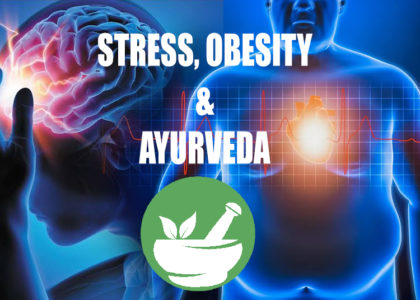Dear readers,
During this pandemic of Covid 19, world is looking at Ayurveda as a ray of hope. Ayurvedic immunity boosters as well as rasayan aushadhis are also playing major role in prevention and post covid care respectively. At this point, some may feel that were these sages aware of microbiology or epidemics?
Thousands of years ago the ancient Indian sages had idea about epidemics or pandemics. That indicates they must have had knowledge of microorganisms too. Let’s take a look in this blog about some interesting facts about the same.
Microorganisms are not new to mankind. They exist with us on this earth from thousands of years. As we human beings evolved with the passage of time, the microorganisms too have changed. With advanced instruments now we can easily find them, study in detail about them.
Ayurveda for diagnostic purpose classify diseases as follows.

As you can see in aagantuj roga where causative factor is from outside the body, krimi (micr00rganisms) is also included.
Krimi includes all kind of bacteria, viruses, parasites etc.
· Vagbhata has described raktaj krimi as anu (minute), apada (with no legs), vritta (round) & adarshana (invisible).
· Sushruta clearly mentions rakatj krimi causes kustha (leprosy and other skin diseases).
· While describing many other diseases like Jwara, kasa etc, Charaka mentions one of the reasons as Aagantuj which clearly indicates that he was aware of infective etiology of the disease.
Ex. kushtha – leprosy (M. leprae)
visarpa – erysipelas (Streptococcus pyogenes)
rajyakshma- pulmonary tuberculosis (M.tubercul0sis)
phirang – syphilis (Treponema pallidum)
These masters of Ayurveda even knew very well about communicable diseases.
Sushruta has named them as aupasargik rogas.
प्रसंगात् गात्रसंस्पर्शात् निश्वासात् सहभोजनात्।
सहशय्या आसनाच्चापि वस्त्रमाल्यानुलेपनात्।।
कुष्ठं ज्वरश्च शोषश्च नेत्राभिष्यंद एव च।
औपसर्गिक रोगाश्च संक्राम्यंति नरान्नरम्।। Su.ni.5/32-33
In the above shloka he says, by mere association, touch, inhaling other person’s expired air, eating together in common plate, sharing same bed or seat, wearing each other’s clothes or ornaments etc causes communicable disease. Here sharing bed also indicates sexually transmitted diseases.
Vagbhata also explains that amongst all the communicable diseases, skin and eye diseases are highly contagious.
One more aspect in this context is Bhootvidya. It is mentioned by Sushruta. Here different Grahas represent different microorganisms.
Ex. skanda –poliomyelitis Mesha- meningitis
Vishakha – convulsions Swagraha – Rabies
Putana –hypokelemia Pitrugraha– Diarrhoea
Epidemics (janpadodhwansa vyadhi) and Ayurveda –
While describing epidemics in nidansthana, Charaka says that there are some basic vikrutis (abnormalities) that causes epidemics. Air, water, place and climate are the basic factors that show abnormalities. They are as follows –

Apart from this, Charaka mentioned few important factors responsible for epidemic and pandemics. If you observe keenly, you will be surely surprise to see how correct they are in today’s scenario also. Let’s take a look at them.
- When the rulers of the country misbehave, cheat or disrespect people of that country or when they act selfish, eventually the people of that country adapt the same qualities. This leads to Ritu viparyay (abnormal climate than that particular season) like draught/flood or extreme heat or extreme cold. Here we can think about some illegal constructions, cutting of jungles etc caused by selfish, greedy nature of the people causes disturbance of natural order leading climate change.
- Daiva (luck as a result of your past karmas) & purushartha (efforts taken by one presently) – balance between these two decides life of a person. When these two factors are imbalanced in society, naturally we invite many untimely deaths through epidemics.
- There are four yugas(ages) as per Hindu culture. Satya yuga,Treta yuga, Dwapara yuga and Kali yuga. Amongst these, first 3 yugas are already elapsed and we are presently in the Kali yuga. Sages say that with each passing yuga, life of human being will reduce and so is the efficacy of panchamahabhutas & purity of dharma. Also quality of natural food reduces with each yuga.
- When people in the society do not follow good daily routine (dinacharya) & start eating too much they get overweight. This makes them tired easily. They tend to get more lazier and start accumulating things (relationships, money, comforts etc) for convenience. Now this habit of accumulation makes them greedy. Ultimately greed tempts them to behave unethically. It again leads to epidemics.
Ref. Cha.Ni.2/23-24
One more indirectly pointed out reason is, interference with natural order brings unknown bacteria and virus in contact with mankind.
Considering all these points, Ayurveda has suggested a simple and effective line of treatment.
1. Follow proper dinacharya and ritucharya i.e. have a good lifestyle.
2. Develop qualities like respect for elders & teachers, speaking truth, being honest.
3. Learn to follow the rituals that give peace of mind and contentment.
4. Herbs that are collected and prepared before epidemic will be more effective while treating patient as per his diagnosis.
5. Panchakarma is also beneficial in certain cases.
6. Dhoopan is also part of treatment as it purifies air also.
7. Mantra chikitsa (daivavypashraya/ satvavajaya chikitsa)
8. Vishesh chikitsa which includes ghritapaan (consuming medicated ghee) or other specific treatment as per dosha, dushya.










